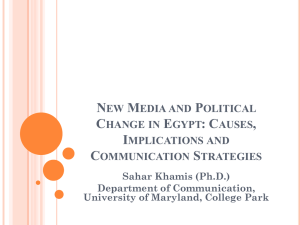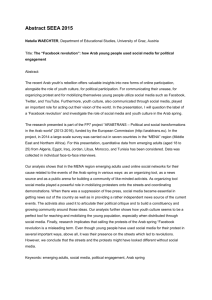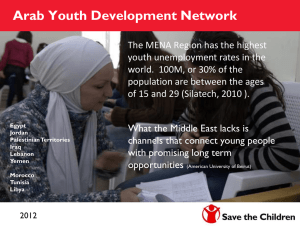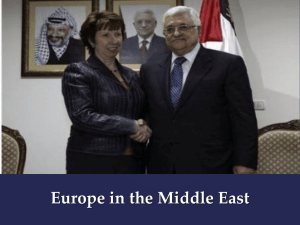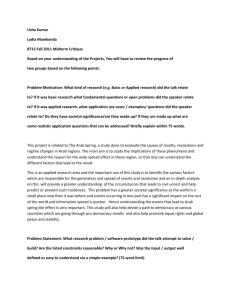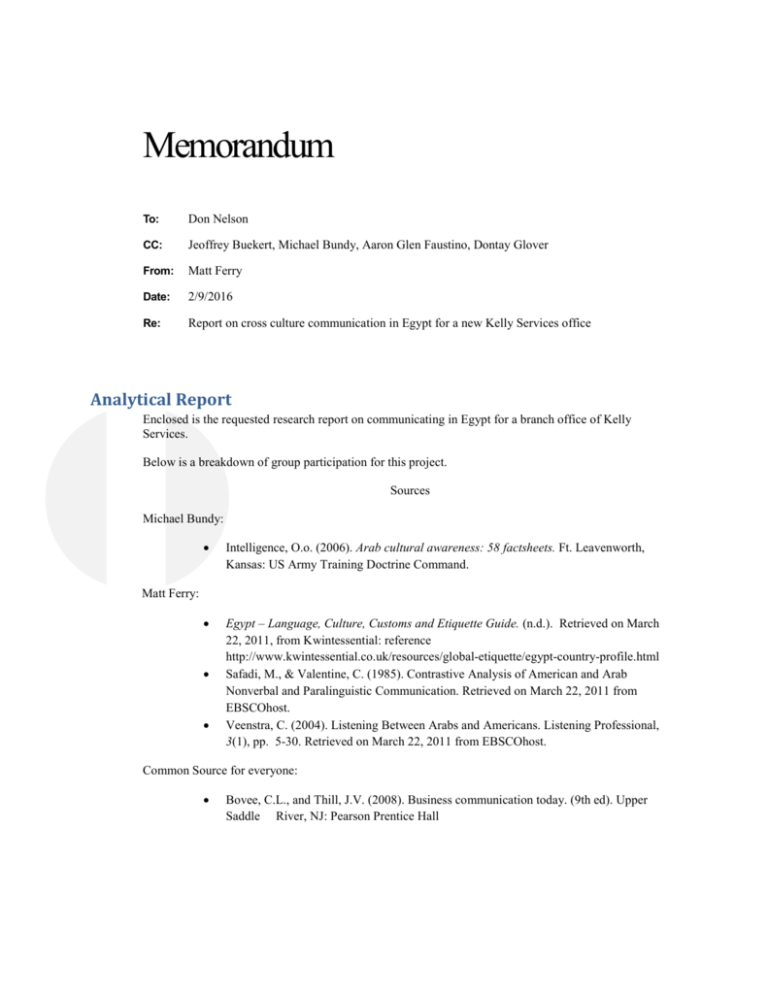
Memorandum
To:
Don Nelson
CC:
Jeoffrey Buekert, Michael Bundy, Aaron Glen Faustino, Dontay Glover
From:
Matt Ferry
Date:
2/9/2016
Re:
Report on cross culture communication in Egypt for a new Kelly Services office
Analytical Report
Enclosed is the requested research report on communicating in Egypt for a branch office of Kelly
Services.
Below is a breakdown of group participation for this project.
Sources
Michael Bundy:
Intelligence, O.o. (2006). Arab cultural awareness: 58 factsheets. Ft. Leavenworth,
Kansas: US Army Training Doctrine Command.
Egypt – Language, Culture, Customs and Etiquette Guide. (n.d.). Retrieved on March
22, 2011, from Kwintessential: reference
http://www.kwintessential.co.uk/resources/global-etiquette/egypt-country-profile.html
Safadi, M., & Valentine, C. (1985). Contrastive Analysis of American and Arab
Nonverbal and Paralinguistic Communication. Retrieved on March 22, 2011 from
EBSCOhost.
Veenstra, C. (2004). Listening Between Arabs and Americans. Listening Professional,
3(1), pp. 5-30. Retrieved on March 22, 2011 from EBSCOhost.
Matt Ferry:
Common Source for everyone:
Bovee, C.L., and Thill, J.V. (2008). Business communication today. (9th ed). Upper
Saddle River, NJ: Pearson Prentice Hall
Report Writing
Matt Ferry:
Initial starting file of the project
Introduction
2nd paragraph, and information on communication imagery
Jeoffrey Buekert:
Introduction
3rd and 4th paragraph
Closing
Michael Bundy:
Minor revisions to introduction and 2nd paragraph
Suggestion for limiting some of the information supplied on communication Imagery
Dontay Glover and Aaron Glen Faustino:
Non participants outside of general approval, and apologies for not participating
This project was particularly interesting in that locating the requested information was not the easiest of
tasks to accomplish, but when located it was very intriguing as to some of the differences between the
Arab culture and that of the United States. The actual writing of the report was also enjoyable. While
Jeoffrey and I wrote the report we used Google doc sharing for on the fly editing and bouncing ideas off
each other, and I believe successfully pulled useful information into a cohesive report.
CONFIDENTIAL
Date: March 25, 2011
To: Don Nelson
From: Aaron Glen Faustino, Dontay Glover, Jeoffrey Bueckert, Matthew Ferry and
Michael Bundy
Memo: Communicating in Arab Countries (Egypt)
In preparation for the opening of the Egypt branch office we have researched the
communication information that you requested in our last meeting. This office has the
potential of being extremely profitable as the population of Egypt was reported to be
approximately 76 million back in 2004 (Egypt - Language, n.d.), with possible market
openings to the rest of the Arab world, which consists of approximately 200 million
people (Intelligence, O.o, 2006, p.3). In order to make sure that this office is successful,
several vital communication areas need to be addressed due to the cultural differences
between Arab and Western culture. Our company needs to be careful not only with
what is said, but they need to understand differences in body language and dress as
well.
According to Business Communication Today (2008, p.69), Arab countries are
considered to be high context countries and as such they focus on building relationships
instead of exchanging information.
“The culture of the Arab peoples developed largely separate from Western civilization. Arab
civilization progressed in mathematics, science, and art. While European civilization struggled
through the Middle Ages. This separate development led to a lack of understanding between the
two cultures.” (Veenstra, C. 2004, p.25)
This building of relationships process means that it is more important how information is
delivered compared to the information itself. In order to be successful, a better
understanding of the differences with the Arab audience is required. Below are some
information charts on common, different, and confusing imagery that should be kept in
mind when composing letters, billboards, or other marketing designs for the Egypt
office.
Common Imagery
Fingers hold forehead or head = headache or problems
Hand-cup ear = I can't hear you
Thumbs-up = OK
Thumb between forefinger and middle finger = obscenity
Closed Fist, Thumb up, Forefinger extended = Gun
Upward turn of wrists holding palms open = I don't know
Palm down held horizontally = wait
Fingers hold forehead or head = headache or problems
Different Imagery
Rub Head = Maybe
Stare = Contact with the Others Soul (not rude or threat)
Avoiding gaze = Rude in conversation (not hiding something)
Hand covers eye = Swearing by one’s eyes (not Headache)
Hand covers face = Fool
Forearm grasp = Strength
Arm Exposure = improper for women
Left hand = unclean
Closed fist, forefinger extended horizontally = indicator / gun (not just indicator)
Fist with fore and middle finger vertically extended Arab "mild go to hell"
Above gesture enclosing the Nose = obscenity
Downward turn of palm = secret; "Follow me"
Hand to genitals in Public (Males) = irrelevant, scratching
Flat Fingers together = Indicator, pointer.
Hiding (Dark glasses) = Rude during Conversation
Confusing Imagery
Scratching Head: American = Thinking or Scratching an Itch ; Arab = Scratching an Itch
Gazing: American = Between Strangers Sexual Interest ; Arab = Intimacy, Sexual and
nonsexual
Lowering gaze: American =Submission , expected between strangers in a crowd ; Arab =
Submission expected of religious person with strangers of opposite sex; politeness in children
being chastised
Holding ones nose: American = It Stinks ; Arab = Go to hell or It stinks
Mouth to Mouth Kiss (same sex): American = homosexual ; Arab = Alright for friends and
Family
Mouth to Mouth Kiss (opposite sex): American = sexual, family ; Arab = Sexual, alright for close
family
Mouth to Cheek (male - male): American = close family , some friends ; Arab = family and friends
for Arabs
Mouth to Cheek (female - female): American and Arab = family friends for both
Mouth to Cheek(male - female): American = family some friends ; Arab = Close family some
friends
Horizontal curved palm up, fingers together = give, come, prayer indication
*It should be noted that the above lists are the most common examples, and more research
should be conducted. The above information was obtained from Contrastive Analysis of
American and Arab Nonverbal and Paralinguistic Communication (1985, pp. 25-30).
Arabs also dress differently than Western civilization, and their dress has different
meanings and values than ours. While their actual dress depends on where they are, a
typical Arab could be seen in anything from the traditional flowing robes to the jeans and
tee shirts of western civilization to anything in-between. Men are usually seen with a
headdress, and the color of the headdress represents which tribe an Arab belongs to as
well as his status within that tribe. For example a red and white checker generally
means he is from Jordan and that he is considered a monarch; while a black and white
checker constitutes a Palestinian who is of a presidential rule, and Shi’a-black
represents a clergy of the prophet Mohamed, and white represents those who are
considered low-class (Intelligence, O.o. 2006, ,p.7). Arab men also tend to treat their
women differently than Western culture. While they will stand when a woman enters the
room, they do not consider most women as equals, but instead as an instrument to
keep their homes tidy and take care of their children. It is never appropriate for
someone to ask an Arab man about any female members of his family.
Women play an extremely different role in Egypt than in North America. While the
tradition of their dress still varies depending on their location, there are some absolutes
that are almost always followed. Arab women are known for their modesty and are
usually seen in full robes with their head and face covered. There are some very
important rules when it comes to interacting with an Arab woman. A man must be
careful to never touch, flirt, maintain eye contact or talk in private to a woman, or he
could be endangering her life. A man may only shake a woman’s hand IF she has first
offered her hand, and may only speak in public to her if she has been introduced first
and is conversing only about business matters.
As has already been demonstrated, there are numerous areas that need to be
considered in this endeavor. Not only does our company need to be careful with what is
said, but we need to be careful how we present ourselves through dress, speech and
interactions with the people of Egypt. By following some simple rules, we can ensure a
longstanding business with the Arab culture around the world.
Team Signatures,
References
Bovee, C.L., and Thill, J.V. (2008). Business communication today. (9th ed). Upper
Saddle River, NJ: Pearson Prentice Hall
Egypt – Language, Culture, Customs and Etiquette Guide. (n.d.). Retrieved on March
22, 2011, from Kwintessential: reference
http://www.kwintessential.co.uk/resources/global-etiquette/egypt-countryprofile.html
Intelligence, O.o. (2006). Arab cultural awareness: 58 factsheets. Ft. Leavenworth,
Kansas: US Army Training Doctrine Command.
Safadi, M., & Valentine, C. (1985). Contrastive Analysis of American and Arab
Nonverbal and Paralinguistic Communication. Retrieved on March 22, 2011 from
EBSCOhost.
Veenstra, C. (2004). Listening Between Arabs and Americans. Listening Professional,
3(1), pp. 5-30. Retrieved on March 22, 2011 from EBSCOhost.


